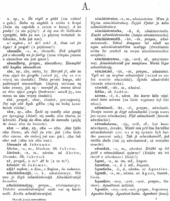What are Artists' Books? according to V&A
Definitions
Artists' books is the broad term used to describe books, unique or multiple, that have been made or conceived by artists. There are fine artists who make books and book artists who produce work exclusively in that medium, as well as illustrators, typographers, writers, poets, book binders, printers and many others who work collaboratively or alone to produce artists' books. Many artists' books are self-published, or are produced by small presses or by artists' groups or collectives, usually in limited editions. There are many terms used to describe artists' books. Some of the most frequently used terms are book art or bookworks (these terms implying an affinity with the traditional structure of the book) while those that are sculptural objects that allude to the form of the book are commonly referred to as book objects. All of the terms that have been mentioned here are used in the Visual Database of Artists' Books. The database also includes other types of works produced by artists in the book format such as concrete poetry, a genre of visual poetry where the meaning is derived from the spatial, pictorial and typographic characteristics of the work, as well as from the sense of the words.
Origins & Development
Contemporary artists' books are noteworthy for the multiplicity of forms in which they are found. It is perhaps for this reason that historians of the genre frequently identify a myriad of precursors and influences. Artists and their associations with books date back to the era of manuscript production. Many artists through the centuries have been concerned with books as an artistic enterprise, notably William Blake at the end of the 18th century and William Morris at the Kelmscott Press from the 1890s. Avant-garde artists throughout the 20th century have also produced many books as part of their artistic endeavours such as periodicals, pamphlets and manifestos. This list merely scratches the surface of potential influences and precursors to contemporary artists' books which are drawn out more fully in numerous works in the bibliography section of this site.
It is however the livre d'artiste, also known as the livre de peintre, that is generally considered to be a key precursor to the genre of artists' books. Originating in France around the turn of the 20th century, the livre d'artiste is a form of illustrated book. The essential feature that distinguishes it from its predecessors is that each illustration is executed by the artist directly onto the medium from which it is printed, rather than being transferred from an artist's design by a technician. An early exponent of the livre d'artiste was the dealer Ambroise Vollard who commissioned Pierre Bonnard to illustrate with lithographs a collection of poems by Paul Verlaine, Parallèlement, published in Paris in 1900 (NAL pressmark: Safe 1.A.1). The works produced were essentially deluxe, limited editions, produced on high quality paper using specialized printers. They were generally left unbound so that they could be dismantled for display and also so that bespoke bindings could be commissioned if desired. Vollard produced numerous works in association with a number of artists, matching them up with texts to illustrate. Various other publishers followed suit, collaborating with artists of their own association. The National Art Library holds a number of livres d'artistes which are described in the exhibition catalogue: From Manet to Hockney: modern artists' illustrated books , edited by Carol Hogben and Rowan Watson, London: Victoria and Albert Museum, 1985. (NAL pressmark: CTR REF)
It is generally accepted that the conceptual work of Dieter Roth and Ed Ruscha in the 1950s and 1960s mark the foundations of the genre of artists' books. In 1962 Ed Ruscha published the first edition of Twenty-six gasoline stations (NAL pressmark: SA.91.0042) which comprised 26 deadpan photographs of gasoline stations along Route 66 from Los Angeles to Oklahoma City. This book was not intended as a means for the reproduction of pre-existing photographs, but rather it was deliberately designed as a primary object in its own right; it was in fact an artwork. The essential characteristics of the book format, such as ideas of seriality and sequence provided by the turning of pages, were an inherent aspect of the work and as such it is credited as a seminal example in the advent of a new genre that has come to be defined as artists' books. Ruscha produced a series of bookworks in a similar vein. A further characteristic of this series was that they were published in unlimited editions, had a wide distribution and were inexpensive to buy in a deliberate attempt to bring art to a wider audience. A contemporaneous pioneer of artists' books was Dieter Roth. Roth's distinctive contribution to the emergent genre was his examination, through his bookworks, of the formal qualities of books themselves. These formal qualities such as flat pages, bound into fixed sequences were deconstructed and investigated, for instance in 2 Bilderbücher (1957) (NAL pressmark: X920000) which comprised 2 picture books of geometric shapes, with die-cut holes cut into each page to allow glimpses of patterns from the pages beneath. Structural investigations such as these became the subject matter of the book itself. Subsequent works such as Daily Mirror (1961) involved the use of found materials manipulated to a particular purpose, a technique much used by later book artists.



